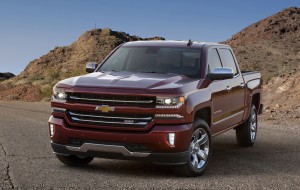
A sluggish May for automakers may have kickstarted a rush of incentives to keep the good times rolling.
Bad news for the auto industry could mean good news for U.S. car buyers.
With only a few exceptions, automakers took an unexpected tumble in May, and Chevrolet is rolling out big new incentives aimed at rebuilding momentum and regaining lost market share. Industry analysts are expecting to see even more givebacks as the industry fights to retain the record sales pace set early this year.
The goal is to “get dealers and customers excited,” said General Motors spokesman Jim Cain. The new Chevy incentives will cover the big Silverado pickup, as well as most of the brand’s passenger cars. The announcement follows a weak May for GM that continued the steady decline in market share it has seen all year.
May, said Chevy brand chief Brian Sweeney, “did not deliver the result we planned for.” For General Motors, as a whole, U.S. market share dipped to 16.6% for the first five months of 2016, down 1.1 points from the same period a year earlier.
But GM isn’t the only maker worried about lost momentum. The auto industry, on the whole, saw sales dip 6% last month. Toyota was down 9.6%, Honda off by 4.8%. Hyundai was one of the rare winners, with a 12% increase for May, Fiat Chrysler Automobiles eking out a more modest 1% gain.
The overall slump came despite a sharp, 7.1% year-over-year increase in incentive spending, according to an analysis by data tracking firm TrueCar. The typical vehicle carried a $3,034 giveback – the figures ranging from $612 per vehicle at Subaru to $4,978 at BMW.
That said, Americans still paid more for their vehicles in May, TrueCar estimating the Average Transaction Price, or ATP, in May came to $32,944, up 3.4% from the $31,868 buyers spent a year earlier. One reason is the continuing shift from conventional passenger cars to pickups, vans, SUVs and crossovers.
(JPMorgan’s Dimon fearful of auto lending future. For more, Click Here.)
TrueCar analyst Eric Lyman said that incentives have risen only “modestly” in recent months, automakers holding to a “healthy” discipline meant to avoid the budget-busting givebacks that all but destroyed industry profitability in the run-up to the Great Recession.
But whether makers will continue to maintain that discipline going forward is becoming less certain, warned John McElravey, automotive analyst with Wells Fargo & Co.
The new Chevy givebacks could be the first sign that McElravey is right. And other analysts suggest that if sales continue to lag in the coming weeks, the industry could roll out even more deals before the end of June.
Some of the biggest deals on the market right now are available for customers looking to lease, rather than buy.
(Click Here for details about the rise in gas prices for the summer driving season.)
For motorists willing to trade in every two to four years, leasing has long had its appeal, as they only pay for the depreciation experienced while the car is in their hands. The bottom line is a lower monthly payment – sometimes significantly lower, especially when manufacturers offer subsidies or artificially inflate residuals, the estimated value of the vehicle at the end of the lease.
Leases currently account for a record 30% of U.S. new vehicle sales, according to a new report by Experian Automotive and, for some luxury brands, the figure is twice as high.
The deals may be great for consumers but the risks are high for automakers and auto lenders, warned JPMorgan Chase CEO Jamie Dimon, during an investor presentation last week. “Someone will get hurt in auto lending” as a result of “overheated” competition, especially in leasing.
The big risk is that when the current bubble of lease vehicles comes flooding back on the market all those near-new models will depress prices and lead to big losses.
(To see what cars, trucks and crossovers are the best buys for families, Click Here.)
Despite such concerns, few observers expect to see manufacturers sit still as the U.S. auto market cools off. And that means shoppers looking for deals could be in the driver’s seat in the months to come.

